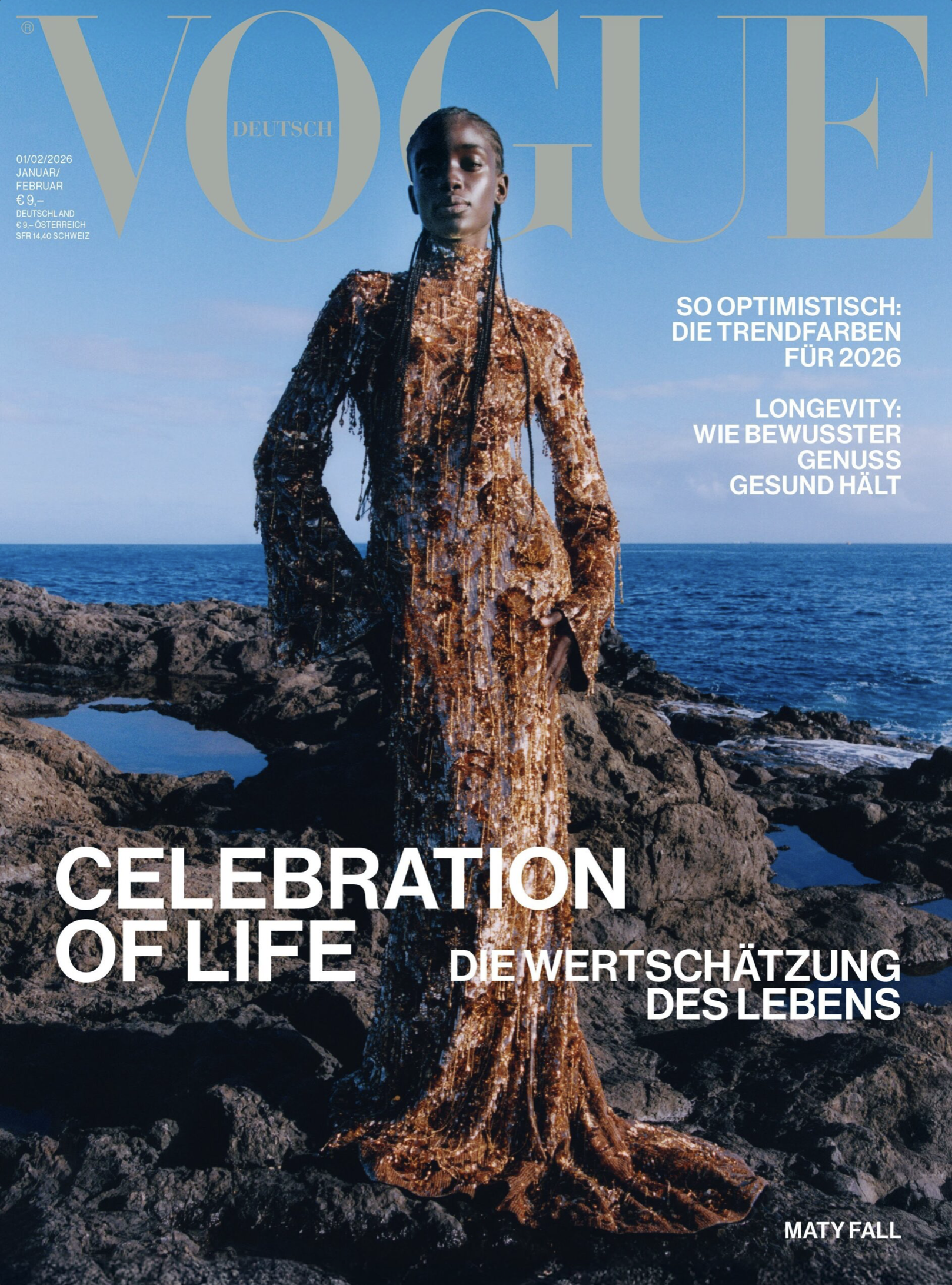Lakshmi Menon Covers Vogue India March 2022 in 'The Sari Holds Our Secrets'
/Lakshmi Menon covers the March 2022 issue of Vogue India, ‘A Homecoming’, marking a return to part-time modeling after the birth of her daughter Gayatri with Suhel Seth, who she married in 2018. Megha Kapoor styles Menon in ‘Shapes And Drapes’, lensed by Ashish Shah [IG]./ Hair & makeup by Mitesh Rajani
Rather than an interview with Lakshmi Menon, Vogue India chooses to focus on the traditional sari that covers her body and those of Indian women across the continent. It’s impossible not to quote liberally from the exquisite writing of Bandana Tewari in ‘The sari holds our secrets’. Her words are among the most poetic and deeply probing ones I’ve read about women lives and women’s bodies in a long time.
For Indian Women Historically: Body and Sari Are Inseparable
Sari, or ‘strip of cloth’ in Sanskrit, is much more than a piece of clothing, explains Tewari.
It is the subcontinent’s collective dream of womanhood, of femininity, and a lifelong ritual of love and pleasure immersed in the shapes and drapes of our inner worlds. Mothers, whilst draping saris on their coming-of-age daughters, are known to gently whisper, “We are dressing not just our bodies but also our emotions.”
Body and sari are inseparable — “the sex-yard dance of our natural curves, the meandering metaphors of our lives, the contours of our thrills and the creases of our discomfort.”
We learn the story of the disrobing of Draupadi, a “powerful story of the sacred alchemy of weave and wearer. There is a much more in-depth probing of the story of Draupadi in The Hindu.
Personally I believe in the creative use of fantasy and allegory in the treatment of sexual trauma. In my own case I developed a metaphorical relationship with a tree representing Gaia and through meditation I gave her all my “crud” for composting and rebirth — the terrible residue of my own sexual assault. I visualized an umbilical cord relationship with my beloved tree.
Reading this story about Draupadi, it is so powerful and also there are healing purposes to it that could be employed in visualization techniques for survivors of deep sexual assault. I’m not speaking of an unwanted kiss or your butt being squeezed by a stranger in an elevator. I speak of deadly, vicious assault which often leaves women {or men] consumed with guilt and stain — and a sense of being the sinner herself, the wearer of the scarlet letter.
The disrobing of Draupadi
In the great Indian epic Mahabharata, the disrobing of Draupadi, the wife of the Pandava brothers, is a powerful story of the sacred alchemy of weave and wearer. As the story goes, while surrounded by men of royal pedigree, men from her own family, Draupadi was ordered to be disrobed publicly by Dushasana. She was traumatised by this humiliation, and with no man in that royal audience coming to her rescue, it was the sari that became her compassionate saviour. Draupadi’s sari miraculously turned into an endless fabric—the more Dushasana pulled at it, the more it unravelled, till it looked like a flowing river of cloth. In the end, Draupadi was never disrobed because the sari became her divine, transcendent protector.
British Colonial Penal Law Sought to Smear India and today’s Pakistan with Alleged Promiscuity Encouraged by the Sari
Bandana Tewari addresses British colonization and the ‘chastity’ of women being smeared with the alleged ‘promiscuity’ of the sari. It was declared that Indian women had to wear undergarments, under their saris.
“A pity indeed, as a living, breathing cloth that was replete with the symbolism of an untameable spirit and the ferocity of feminine energy, was stripped in the name of sartorial morality,” writes Tewaru.
It’s only last year that a Pakistan court outlawed ‘virginity tests’ in the Punjab province in the case of rape. AOC wrote about India changing the law perhaps a decade ago. I was horrified reading the law as summarized here, an explanation that gives an extra punch to Tewaru’s concept about British colonial rule focused on sartorial morality at the expense of feminine energy and spirit:
The colonial-era test which Justice Ayesha Malik ruled as unconstitutional involves inserting two fingers into the vagina of the victim to test its laxity and for the presence of a hymen to determine whether or not the victim is “habituated to sexual intercourse”. In cases of rape, consent isn’t something that can be ‘objectively quantified’, and Zainab Z. Malik argues that the test is used to ‘decode’ consent. If the victim isn’t a virgin, courts are reluctant to consider a victims claim of rape because the victim character isn’t in line with what is deemed ‘chaste’ or ‘pure’.
Let us note that it was Pakistan’s first female Supreme Court Justice Ayesha Malik, a judge of the Lahore High Court, who struck down the procedure being used with rape victims who wanted to prosecute a case.
Malavika Sarukkai: ‘Thari - The Loom’ [2018]
In the winter of 2018, the renowned Indian dance artiste Malavika Sarukkai performed her dramatic composition ‘Thari - The Loom’, a deeply nuanced work inspired by the sari, at the Kennedy Centre. Sarah L. Kaufman, the Pulitzer Prize-winning dance critic of The Washington Post and the author of The Art Of Grace: On Moving Well Through Life wrote in her critique: “The simple elegance of a sari, unstitched and exquisitely draped, rather than bound up by zippers, buttons or belts, offers a wealth of associations. ‘As a young dancer, the sari was a proclamation, a sense of purpose,’ a voice-over tells us. The garment, bestowing confidence and dignity on its wearer, eventually became “an emotion, a state of mind.”
To close this outrageously well-written and sensitive short essay on the sari — a piece of fashion writing that elevates the female experience, Bandana Tewar closes:
The sari, this enduring piece of art, is the repository of our past and present. And to paraphrase Fiona Dolenga, a brilliant choreographer from New York, in the book Dance Of The Weave, the fabric that can metaphorically emulate so many natural forces—rivers, oceans, lagoons, flames, clouds, mountains, oil, vapour, flowers, blood, molten lava—is also symbolic of the struggle and the grace of the female experience.


























